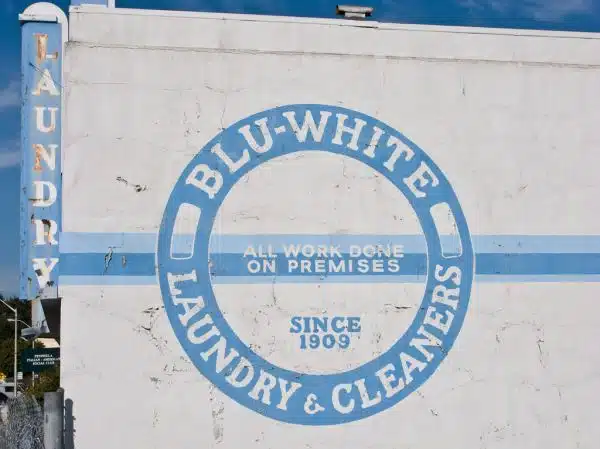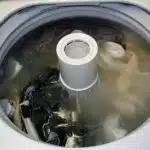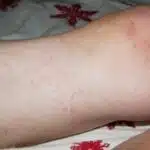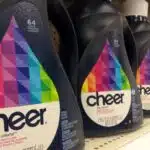Laundry bluing has been an essential tool in the laundry room for centuries. Its use dates back to the 1700s when it was first introduced as a way of enhancing the whiteness of fabrics. Today, bluing is still used to brighten white clothes and remove yellowing caused by age, detergents, or hard water minerals.
Bluing is a blue pigment that is added to the wash water during the rinse cycle. It works by depositing small particles of blue pigment onto the fabric, which counteracts any yellowing or graying caused by impurities in the water or detergent residue. Using bluing can also help prevent fabrics from becoming dingy over time and will leave whites looking brighter and fresher. In this article, we will explore how to use laundry bluing effectively and provide tips on how to get the most out of this timeless laundry aid.
A Brief History Of Laundry Bluing
Laundry bluing has been an essential product in households for centuries, with a rich history and cultural significance. In many cultures, blue is considered to be a symbol of purity and cleanliness, which is why laundry bluing has been used as a way to enhance the whiteness of fabrics. The practice of using laundry bluing dates back to ancient Egypt, where blue dye was made from the indigo plant and used to color clothes.
Over time, laundry bluing became widely used in Europe during the Victorian era. During this period, fabrics were often washed with harsh soaps that would leave them looking dull and gray. Laundry bluing was added as a way to counteract the yellowing caused by soap residue and restore the brightness of fabrics. Additionally, laundry bluing played an important role in art and literature during this time period. The deep blue color provided by laundry bluing was often used by artists as a background color for paintings, while writers would use it as a metaphor for something pure or virtuous.
Today, although modern detergents have largely replaced the need for laundry bluing in many households, it remains an important product for those who desire crisp white garments and linens. Furthermore, it continues to hold cultural significance as an emblem of cleanliness in many parts of the world. In the following section we will discuss what exactly is laundry bluing and how it works to brighten fabrics.
What Is Laundry Bluing?
Laundry bluing is a laundry additive that is used to improve the whiteness or brightness of fabrics. It has been used for centuries, with the earliest known use dating back to ancient Rome. Today, laundry bluing is commonly used in households and industries around the world.
Uses of laundry bluing are varied and can include anything from whitening white clothes, to brightening colors, to preventing yellowing or graying of fabrics. It is particularly effective on old linens or cottons that have become dull over time. Additionally, it can be used as a natural insect repellent because it makes fabrics less attractive to pests like moths.
Effectiveness of laundry bluing can vary depending on the type of fabric being treated and the method of application. For best results, it should be added during the rinse cycle after detergent has been washed out but before fabric softener is added. It is important not to use too much laundry bluing as it can cause fabrics to turn blue instead of white. A good rule of thumb is to use no more than 1/8th teaspoon per gallon of water.
To understand how laundry bluing works, it’s important to first understand how light interacts with different colors. In simple terms, white reflects all colors while black absorbs them all. When fabrics start to appear dull or grayish, what’s happening is that they are absorbing more colors than they are reflecting back at us. This is where laundry bluing comes in – by adding small amounts of blue dye into the rinse cycle, it helps counteract this effect by reflecting more blue light back at us which gives the illusion of whiter, brighter fabrics.
How Does Laundry Bluing Work?
Bluing is a laundry additive used to brighten white fabrics and is composed of a colloidal suspension of ultramarine blue pigment in water. To use bluing, add the recommended amount to the wash cycle with the fabric, usually a teaspoon for every gallon of water. The benefits of bluing are that it makes whites look brighter and crisper due to the blue pigment’s ability to neutralize yellowing. Additionally, bluing can also help eliminate greyish tones and yellowing stains on white clothing. Furthermore, bluing is safe to use on most fabrics and will not damage them. Finally, bluing is an affordable and easy-to-use laundry additive that can help restore the bright color of whites.
What Is Bluing
When it comes to laundry, everyone wants their clothes to look bright and clean. This is where bluing comes into play. Bluing is a laundry product that has been used for centuries to brighten whites and make colors more vibrant. It is typically made from a blue dye or pigment, which is then mixed with water and other ingredients to create the final product.
One of the main uses of bluing is to counteract the yellowing that can occur in white fabrics over time. This yellowing is caused by a variety of factors, including exposure to sunlight and certain chemicals. By adding bluing to the wash cycle, you can help restore the bright, crisp appearance of your whites. In addition, bluing can also be used on colored fabrics to help enhance their brightness and prevent fading.
The ingredients in bluing vary depending on the brand and type of product, but they typically include a blue dye or pigment, along with other substances such as surfactants and stabilizers. Some types of bluing may also contain optical brighteners, which are compounds that absorb ultraviolet light and re-emit it as visible light. This can make clothes appear brighter under certain lighting conditions. Overall, bluing is a versatile laundry product that can help keep your clothes looking their best.
How To Use Bluing
As a laundry bluing expert, it is important to know how to properly use bluing products for whitening purposes. Firstly, it is essential to choose the right type of bluing product as there are different options available in the market. Liquid bluing can be added directly to the rinse cycle, while solid bluing needs to be dissolved first in water before adding it to the wash. Powdered bluing can be added either to the wash or rinse cycle depending on the desired effect.
To use liquid bluing for whitening, add a few drops of the product into the fabric softener dispenser during the rinse cycle. For solid and powdered bluing, dissolve a small amount of the product in water before adding it directly to the wash or rinse cycle. It is important not to overdose on bluing as this can lead to staining and discoloration of fabrics.
It should also be noted that although bluing can help with whitening, it cannot completely remove stains or yellowing caused by certain chemicals or sun exposure. In such cases, pre-treatment with stain removers or bleach may be necessary before using bluing for additional brightening effects. As an expert in laundry care, using bluing for whitening can be an effective tool in keeping clothes looking their best when used correctly and in combination with other laundry care products.
Benefits Of Bluing
Understanding how laundry bluing works is crucial for anyone looking to maintain the brightness and whiteness of their clothes. Apart from its practical applications, there are also several benefits of using bluing in laundry care. One major benefit is the psychological effects it can have on people. The mere act of wearing clean, bright clothes can boost one’s confidence and enhance their mood, leading to a more positive outlook on life.
Moreover, bluing has significant cultural significance in many parts of the world. In some cultures, white clothes are associated with purity and cleanliness and are often worn during important ceremonies or events. In such cases, bluing can help ensure that the clothing remains bright and white, adding to the overall aesthetic value of the event.
In addition to these benefits, bluing can also help preserve fabrics by protecting them from yellowing or fading over time due to exposure to sunlight or other environmental factors. By doing so, it extends the lifespan of clothing items, saving money for consumers in the long run. Overall, understanding the benefits of bluing in laundry care can lead to better utilization of this product and improved satisfaction with laundry outcomes.
The Benefits Of Using Laundry Bluing
Laundry bluing is a popular laundry additive that has been used for centuries. One of the benefits of using laundry bluing is its ability to make white clothes appear whiter and brighter. It helps to counteract yellowing caused by age, wear, and tear, as well as remove any dinginess that may have accumulated due to repeated washing.
Another benefit of using laundry bluing is its effectiveness in removing stains. Unlike other stain removers, laundry bluing does not contain harsh chemicals that can damage fabrics or harm the environment. Instead, it works by enhancing the natural brightness of fabrics and improving their overall appearance.
Comparison between different types of laundry bluing products reveals that each product has its unique features and advantages. Some laundry bluing products are designed specifically for use with white clothes, while others are suitable for use with all types of fabrics. Additionally, some products are more concentrated than others and require less usage per load of laundry. By understanding the differences between various products, shoppers can choose the right one for their specific needs.
When it comes to choosing the right laundry bluing product, there are many factors to consider. Some people prefer natural or eco-friendly options that are free from synthetic fragrances or preservatives. Others may prioritize effectiveness over cost or convenience when making their selection. No matter what your criteria may be, there is a laundry bluing product out there that can help you achieve your desired results without compromising on quality or safety.
Choosing The Right Laundry Bluing Product
- Laundry bluing is an age-old laundry whitening technique that uses blue dye to counteract the yellowing of fabrics.
- There are several different types of laundry bluing products on the market, including liquid bluing, dry bluing, and spray bluing.
- The primary active ingredient in laundry bluing products is typically Prussian blue, a synthetic pigment used to give fabrics a bright, crisp appearance.
- In addition to Prussian blue, laundry bluing products may contain other ingredients such as detergents, surfactants, and optical brighteners.
- For those who prefer a more natural approach, there are a variety of bluing alternative products available, such as hydrogen peroxide, lemon juice, and white vinegar.
- Each of these alternatives has its own set of advantages and disadvantages, and it is important to research each in order to make an informed decision.
Types Of Bluing
When it comes to laundry bluing, there are different types of products available in the market. As a laundry bluing expert, it is important to understand these types and their properties to choose the right product for your needs. One type of bluing is liquid bluing, which is popularly used in the United States. This product is added to the rinse cycle and helps brighten whites while reducing yellowing caused by iron or other minerals in the water.
Another type of bluing is solid or cake bluing, which is popular in Europe and Asia. This product comes in a solid form that can be dissolved in water before adding it to the wash cycle. Solid bluing helps whiten fabrics while also providing a subtle blue tint that counteracts yellowing caused by iron or chlorine in the water.
Lastly, there are natural laundry bluing options available that use plant-based ingredients instead of synthetic chemicals. These products are environmentally friendly and gentle on fabrics but may not be as effective as traditional bluing products. Popular brands of laundry bluing include Mrs. Stewart’s Bluing, Reckitt’s Crown Blue, and Bluette Laundry Bluing.
As an audience that has a subconscious desire for serving others, it is important to choose the right laundry bluing product for your needs. Understanding the different types of bluing available can help you make an informed decision when selecting a product that will best suit your needs. Whether you prefer liquid or solid/cake form or prefer natural options, there are various popular brands available that can help you achieve brighter whites and remove unsightly yellowing from your fabrics.
Bluing Ingredients
As a laundry bluing expert, it is crucial to understand the ingredients used in different bluing products. Some of the common ingredients in traditional bluing products include synthetic chemicals such as Prussian blue, ultramarine blue, and optical brighteners. However, these chemicals can be harmful to the environment and human health if improperly handled or disposed of. Therefore, when choosing a laundry bluing product, it is essential to consider not only its effectiveness but also its safety and environmental impact.
Fortunately, there are alternative bluing options available that use natural ingredients such as indigo powder or blueberries. These natural alternatives are not only safer for humans and the environment but also gentle on fabrics. Additionally, they offer an excellent option for those who prefer to avoid synthetic chemicals in their laundry routine. However, it is important to note that natural bluing products may not be as effective as their traditional counterparts and may require more frequent use.
In conclusion, choosing the right laundry bluing product goes beyond just achieving brighter whites and removing yellowing stains from fabrics. It involves considering factors such as safety, environmental impact, and personal preferences. Whether you choose a traditional or natural bluing product, ensure that you follow the instructions carefully to achieve optimal results while staying safe.
Bluing Alternatives
As a laundry bluing expert, it is important to explore all options when choosing the right bluing product. Traditional bluing products are effective but may contain synthetic chemicals that can be harmful to human health and the environment. Fortunately, there are DIY bluing alternatives available that use natural ingredients such as indigo powder or blueberries.
Natural bluing options offer a safer and more eco-friendly alternative to traditional bluing products. These natural ingredients are gentle on fabrics while achieving similar results to their synthetic counterparts. However, it is important to note that natural bluing products may not be as effective and may require more frequent use.
In conclusion, when choosing a laundry bluing product, it is essential to consider safety, environmental impact, and personal preferences. DIY natural bluing alternatives are available for those who prefer to avoid synthetic chemicals in their laundry routine. It is crucial to follow the instructions carefully to achieve optimal results while staying safe and eco-friendly.
Preparing Your Laundry For Bluing
When preparing your laundry for bluing, it’s important to consider a few factors to ensure optimal results. First and foremost, choosing the right detergent is crucial. You want a detergent that is gentle enough to not strip away any existing color but strong enough to effectively clean your clothes. Look for detergents labeled as “gentle” or “free and clear” as these are typically better suited for use with bluing agents.
Water temperature also plays a significant role in preparing your laundry for bluing. In general, warmer water temperatures are better at removing stains and dirt from clothes, but they can also cause colors to fade or bleed. If you’re using bluing for the first time, it’s recommended that you start with cooler water temperatures around 60-70°F to avoid any potential color mishaps. Once you’ve become familiar with how your clothes react to bluing agents, you can experiment with warmer water temperatures if necessary.
It’s worth noting that while preparing your laundry properly is important when using bluing agents, it’s equally essential to follow instructions closely when adding the blueing agent itself. In the next section, we’ll discuss how much bluing to add and at what point in the washing process to achieve the best results.
Adding Bluing To Your Laundry
Bluing, a laundry additive that has been around for centuries, is an excellent way to brighten whites and remove yellowing caused by age, wear, and tear. The bluing process works by adding tiny blue particles to the fabric, tricking our eyes into seeing a brighter white hue. Bluing can be used in all types of washing machines and is safe for use on all fabrics except silk.
To add bluing to your laundry, first, fill your washing machine with water and add detergent as usual. Next, add the recommended amount of bluing according to the package instructions. Be sure to allow your machine to agitate before adding clothes; this will ensure even distribution of the bluing particles throughout the water. Finally, add your clothes and wash as usual.
If you prefer not to use commercial bluing products or want an alternative option, there are DIY bluing recipes available online. These alternatives are usually made from natural ingredients such as grape juice or lavender oil. Be sure to research these recipes carefully before trying them out as they may not be as effective as commercial products or may cause damage to certain fabrics.
Transition: Now that you know how to add bluing to your laundry effectively let’s move onto mixing it with other laundry products for optimal results.
Mixing Bluing With Other Laundry Products
When using bluing in your laundry, it is important to be mindful of how it interacts with other laundry products. One common question is whether bluing can be mixed with fabric softener. The answer is yes, but caution should be taken as some fabric softeners contain bleach or other chemicals that could react negatively with the bluing. It is recommended to test a small area of fabric first before using both products together.
Another concern when using bluing is if it can be used in dry cleaning. The answer to this question is no. Bluing is designed for use in water-based laundry and should not be used on fabrics that are not meant to come into contact with water. If you have an item that requires dry cleaning, it is best to consult with a professional dry cleaner for the appropriate treatment.
Overall, when using bluing, it is important to read labels carefully and follow instructions closely. Mixing bluing with other laundry products can enhance the results of your wash, but precautions must be taken to ensure compatibility between products and avoid any unwanted reactions.
- Consider adding these items to your next load:
- A cup of vinegar for extra freshness
- Wool dryer balls for natural softening
- Lavender essential oil for a calming scent
- Baking soda for added whitening power
Next, we will discuss tips for achieving the best results when using laundry bluing.
Tips For Best Results With Laundry Bluing
As the saying goes, “a little goes a long way.” This holds true when it comes to using bluing in your laundry. Mixing bluing with other laundry products may seem like a good idea, but it is not recommended. Bluing is designed to be used on its own and mixing it with other products may affect its performance. It is best to use bluing as a standalone product for optimal results.
Bluing alternatives are available for those who prefer not to use traditional bluing products. These alternatives include blueing agents that come in powder or liquid form and can be added directly to the wash cycle. However, it is important to note that not all fabrics are suitable for bluing. Cotton and linen fabrics are ideal candidates for bluing, while synthetic materials such as polyester or nylon may not respond well to the treatment.
When using bluing, it is important to remember that less is more. Using too much bluing can result in an over-saturated look and cause discoloration of fabrics. An appropriate amount would be around one-eighth of a teaspoon per gallon of water used during the rinse cycle. Knowing how often should you use bluing depends on personal preference and fabric type, but generally once every few washes should suffice for maintaining bright whites and vibrant colors.
How Often Should You Use Bluing?
Bluing frequency is a common concern among users of laundry bluing. While it is true that some fabrics can benefit from regular bluing, too much use can have long term effects on the fabric’s color and texture. It is important to understand how often you should use bluing in order to maximize its benefits without causing damage to your clothes.
One rule of thumb for bluing frequency is to only use it when necessary. For example, if you notice that your white clothing has started to look dull or grayish, then it may be time to add a small amount of laundry bluing to your wash cycle. On the other hand, if your clothes are looking bright and clean without the need for bluing, then there is no need to add it unnecessarily.
Another factor to consider when determining how often you should use bluing is the type of fabric you are washing. Delicate fabrics like silk and wool may require less frequent use of bluing, as these materials can be more easily damaged by harsh chemicals. In contrast, cotton and other sturdy fabrics may benefit from more frequent use of bluing in order to maintain their brightness and whiteness over time.
- Always follow the instructions on your laundry bluing product carefully.
- Consider using natural alternatives like lemon juice or baking soda instead of chemical-based products.
- Test a small area before using any new laundry product on an entire load.
Understanding proper Bluing frequency can help ensure that your clothes remain bright and clean while avoiding long term damage caused by excessive use. In the next section, we will explore how you can remove stains with the help of laundry bluing.
Removing Stains With Bluing
Have you ever struggled with getting rid of tough stains on your clothes? Whether it’s grass, blood, or coffee, stains can be a real nuisance. Luckily, laundry bluing can help remove those pesky stains that seem impossible to get rid of.
When it comes to removing different types of stains, it’s important to understand the role that bluing plays compared to other stain removers. While traditional stain removers work by breaking down and lifting the stain from the fabric, bluing works differently by adding a blue tint to the water used in the washing machine. This blue tint helps mask any remaining yellow or brown tones left behind by certain stains, making them less noticeable.
It’s important to note that while bluing can be effective in removing some stains, it may not work on all types of stains. For example, oil-based stains may require a different type of remover altogether. It’s always best to check the label of your laundry bluing product for specific instructions and recommendations on which types of stains it is most effective at removing.
| Types of Stains | Bluing | Other Stain Removers |
|---|---|---|
| Grass | May help mask remaining tones | Can break down and lift stain |
| Blood | May help mask remaining tones | Can break down and lift stain |
| Coffee | May help mask remaining tones | Can break down and lift stain |
Knowing when and how to use laundry bluing can make all the difference in effectively removing tough stains from your clothes. In the next section, we will discuss proper storage techniques and handling methods for laundry bluing products to ensure they remain effective over time.
Storing And Handling Laundry Bluing
Proper storage and handling of laundry bluing is important to ensure its effectiveness and longevity. To store bluing, it should be kept in a cool, dry place away from direct sunlight. Exposure to heat, moisture, or light can degrade the quality of the product and reduce its potency. It is also recommended to keep bluing away from children and pets to avoid accidental ingestion.
When handling bluing, it is important to follow the manufacturer’s instructions carefully. Avoid splashing or spilling the liquid as it can stain clothing or surfaces. It is advisable to wear gloves when handling concentrated solutions of bluing as they can cause skin irritation or allergic reactions in some individuals. After use, any spills should be immediately cleaned up with water and soap.
Additionally, it is important to check the expiration date before using laundry bluing. Expired products may not work effectively or could even cause damage to fabrics. If you notice any changes in color or consistency of the product, do not use it and dispose of it properly.
- Store bluing in a cool, dry place away from direct sunlight
- Keep bluing away from children and pets
- Wear gloves when handling concentrated solutions of bluing
As an expert in laundry bluing, I cannot stress enough how crucial proper storage and handling are for this product’s effectiveness. By following these simple guidelines, you can ensure that your laundry will come out looking bright and fresh every time without risking damage to your clothing or harm to yourself or others.
As we move forward into discussing environmental considerations for laundry bluing, it’s important first to understand how proper storage and handling can impact our planet’s health.
Environmental Considerations For Laundry Bluing
When using laundry bluing, it is important to consider its impact on our environment. While bluing has been a popular laundry aid for centuries, it can also have negative effects on our water systems if not used responsibly. Fortunately, there are eco-friendly options available that can help reduce this impact.
One of the primary concerns with traditional laundry bluing is that it can contain harmful chemicals that are released into our water systems when washed down the drain. These chemicals can cause damage to aquatic life and disrupt the delicate balance of ecosystems. To mitigate this impact, many companies now offer eco-friendly versions of bluing that are free from harsh chemicals and use natural ingredients instead.
Another way to reduce the impact of laundry bluing on our environment is by using it sparingly. Rather than adding bluing to every load of laundry, try using it only when necessary or when you want to brighten up whites or remove yellowing from fabrics. This will help minimize the amount of bluing that enters our water systems and reduce its overall impact on the environment.
| Positive Impact | Negative Impact |
|---|---|
| Brightens whites | Harmful chemicals |
| Natural ingredients | Overuse |
| Eco-friendly options | Disrupts ecosystems |
In summary, while laundry bluing can be a useful tool in maintaining clean and bright clothes, it is important to be mindful of its impact on the environment. By choosing eco-friendly options and using bluing sparingly, we can help reduce its negative effects on our water systems and promote a more sustainable approach to laundry care. In the next section, we will explore alternative uses for laundry bluing beyond just whitening clothes.
Alternative Uses For Laundry Bluing
- Laundry bluing is a blue dye that can be used for a variety of household purposes, one of which is to clean porcelain.
- To use laundry bluing as a cleaning agent for porcelain, it should be diluted in water and applied with a soft sponge.
- Another practical application of laundry bluing is as a hair rinse, which can be used to add a subtle blue tint to the hair.
- Bluing should be added to water and then poured over the hair, which should be rinsed with clear water afterwards.
- Fabric dyeing is another interesting alternative use of laundry bluing.
- Bluing can be added to a dyeing bath, which will result in a beautiful, bright blue hue on the fabric.
Cleaning Porcelain
Cleaning porcelain can be a daunting task, especially when dealing with stubborn stains and discoloration. As a laundry bluing expert, I recommend the use of bluing as an effective cleaning technique for porcelain restoration. Bluing agents contain blue particles that can help restore the original color of porcelain while effectively removing stains.
One way to use bluing for porcelain restoration is by adding a small amount of bluing to warm water and using it to clean the surface of the porcelain. The blue particles in the bluing solution will react with the yellowish stains on the surface of the porcelain, making them less noticeable. Another technique is to mix baking soda and bluing in equal parts and apply it to the affected area. Leave it on for a few minutes before scrubbing with a soft brush and rinsing off with water.
It’s important to note that when using bluing for cleaning porcelain, it’s crucial to follow proper techniques to avoid damaging delicate surfaces. Always test a small area first before proceeding with larger areas, and never use abrasive materials or harsh chemicals that could scratch or damage the porcelain. With proper use, bluing can be an effective tool in restoring your favorite pieces of porcelain back to their former glory.
Hair Rinse
As a laundry bluing expert, I am always looking for alternative uses for this versatile product. One of the surprising ways that bluing can be used is as a DIY hair rinse. Many people are turning to natural options for their hair care routine, and bluing can be an effective solution for those looking to enhance the color and shine of their hair.
To use bluing as a hair rinse, mix a few drops of bluing into a bowl of warm water and apply it to your hair after shampooing. Gently massage it into your scalp and strands before rinsing off with cool water. The blue particles in the bluing solution will help neutralize any yellow or brassy tones in blonde or gray hair, leaving it looking brighter and more vibrant.
It’s important to note that when using bluing as a hair rinse, it should only be used occasionally as overuse could lead to damage or discoloration. Additionally, those with darker hair may not see significant results from using bluing as it is designed to enhance lighter shades. As with any new beauty routine, it’s essential to patch test first and consult with a professional if you have any concerns about using bluing on your hair.
Fabric Dyeing
As a laundry bluing expert, I am always on the lookout for new and innovative ways to utilize this versatile product. One of the surprising ways that bluing can be used is in fabric dyeing. While most people think of synthetic dyes when it comes to fabric dyeing, natural dyes are becoming increasingly popular as people look for more sustainable and environmentally-friendly options.
Bluing can be added to natural dye recipes to help enhance and brighten the color of the fabric. It works particularly well with blue and green dyes, but can also be used with other colors like red or yellow. Additionally, bluing can be used on its own as a fabric dye, creating a beautiful pale blue color that is perfect for summer clothing or home decor.
When using bluing as a fabric dye, it’s important to follow proper safety precautions such as wearing gloves and working in a well-ventilated area. As with any new craft project, it’s important to do your research ahead of time and experiment with different techniques to find what works best for you. By incorporating bluing into your natural dyeing projects, you’ll not only achieve beautiful results but also contribute to a more sustainable future.
Frequently Asked Questions About Laundry Bluing
Like any household product, laundry bluing can be a source of confusion and misconception for many people. However, with proper knowledge and understanding, it can be an incredibly useful tool in enhancing the appearance of white or light-colored fabrics. Here are some frequently asked questions about laundry bluing to help clear up any confusion.
One common misconception about laundry bluing is that it is harmful or toxic. In reality, most modern bluing products are safe to use when following the manufacturer’s instructions. However, as with any cleaning product, it is important to take appropriate safety precautions such as wearing gloves and keeping the product away from children and pets.
Another question that frequently arises is how to use laundry bluing effectively. Bluing agents work by adding a slight blue tint to fabrics, which counteracts any yellowing or dullness. To use bluing, simply add the recommended amount to your wash cycle during the rinse cycle. Be sure to follow the instructions on your particular product for best results.
- Common Misconceptions About Laundry Bluing
- Laundry bluing will make clothes darker.
- Laundry bluing is only for white clothing.
- Laundry bluing will damage fabric.
- Laundry bluing is only necessary if you have hard water.
- Using too much laundry bluing will result in a strong blue tint.
Overall, laundry bluing can be an effective way to enhance the appearance of your whites and light colors without resorting to harsh chemicals or bleach. By understanding how to safely and effectively use this household staple, you can keep your clothes looking bright and fresh for years to come.
Conclusion
Laundry bluing has been a trusted laundry aid for centuries, and it’s not hard to see why. This simple yet effective product can transform dull, yellowed whites into bright, pristine garments that look as good as new. With its long history of success, it’s no wonder that laundry bluing continues to be a go-to solution for many households.
If you’re looking to achieve the perfect white laundry results or simply want to keep your clothes looking their best, then using laundry bluing is an absolute must. Not only does it whiten and brighten fabrics, but it also helps to reduce fading and extend the life of your clothing. So if you want to experience the benefits of this incredible product for yourself, then why wait? Try out some laundry bluing today and experience the difference for yourself!
Image Credits
- “Blu-White Laundry & Cleaners” by ldrose (featured)
















![How To Wash And Care For White Clothes 16 The only genuine borax soap cleanses hygienically saves the clothes and hands. 20 Mule-Team brand Boraxo white laundry soap [front]](https://green-life.blog/wp-content/uploads/2023/05/YDXLLCovnOjq-150x150.jpg.webp)












